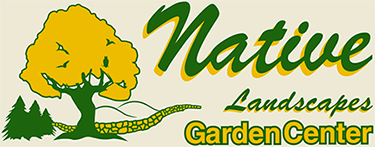The Living Landscape Journal November 2014
Evergreening up the Landscape
The rains began to fall in early October and in a month’s time the water levels were up to almost normal. We got a bit of a scare in late October when the forecast was hinting at another Halloween snow storm. That would have been the third Halloween snow storm in five years. Let’s be thankful that did not happen again.
This is the time of year when everyone starts to ask about what type of Winter we should be preparing for. Many Meteorologists across the area stick their neck out with this year’s long range winter forecast. I’ve heard everything from the worst Winter in 500 years to an average Winter with more precipitation than normal, so I went to the local expert. I asked local Meteorologist, Mike Shustak what his long range forecast was for this winter. He looked at me as if he was rattling through long range weather maps in his head and asked me if I had a quarter in my pocket. I handed him the quarter and he flipped it in the air and said heads a bad winter, tails a mild winter. It came down “tails” so according to Mikes scientific analysis, we are in for a milder than normal Winter. By the way, I saved the quarter.
November is preparing for a long Winter’s nap as the Bear, Bat, Woodchuck, Skunk, Raccoon and Chipmunk prepare to go into a semi – hibernation state called “Torpor”. The animals activity slows way down where rest and inactivity becomes the normal.
The landscape in November looks unkempt as leaves, sticks and stems are blown around in the consistent November breeze. Evergreens become the focal point in the landscape this time of year. Fall is the season to add a full bodied Native White Spruce to that perimeter hedge row hole that needs to be filled. White Spruce is one of the more delicate looking, short needled Spruce and the tree cones at a young age. White Spruce is deer resistant and makes a great Christmas Tree. I recommend planting a grove of them for privacy in a sun filled location.
Native Mountain Laurel, Rhododendron, and Andromeda are the perfect broad leaf evergreen shrubs to accent just about any foundation, hedgerow or raised bed planting. Mountain Laurel features my favorite broadleaf evergreen star shaped flower in red, pink or white. If not planted in the proper soil and exposure, Laurel can be a tough plant to establish. Native Rhododendron comes in all shapes and sizes. The larger Rosebay or Maximum Rhododendron can reach 20′ tall. The “Maxi” flowers in early summer, and it’s not unusual to see this pink to white flower in full bloom early in July. Catawbiense Rhododendron flower much earlier in the season and has a full hydrangea looking flower in many different colors. In a naturalized bed the white, light lavender and dark purple flower work well together. Andromeda flowers in very early Spring and has a fragrant white bloom that has a similar bell shape look and color as the native Blueberry flower.
Most years, our garden soil freezes by mid December so we have a good 6 + weeks to add some handsome evergreens to our landscape this Fall. “Last one to the garden center is a turkey.”
Pete and the Natives
www.nativelandscaping.net
